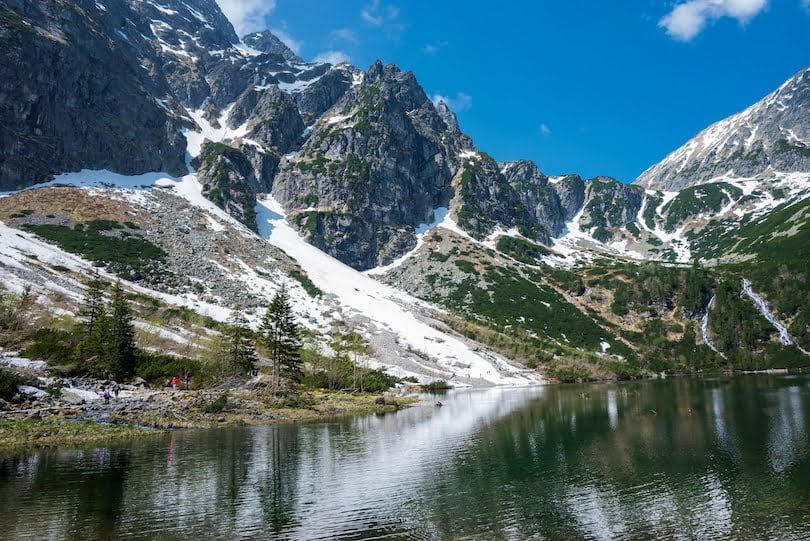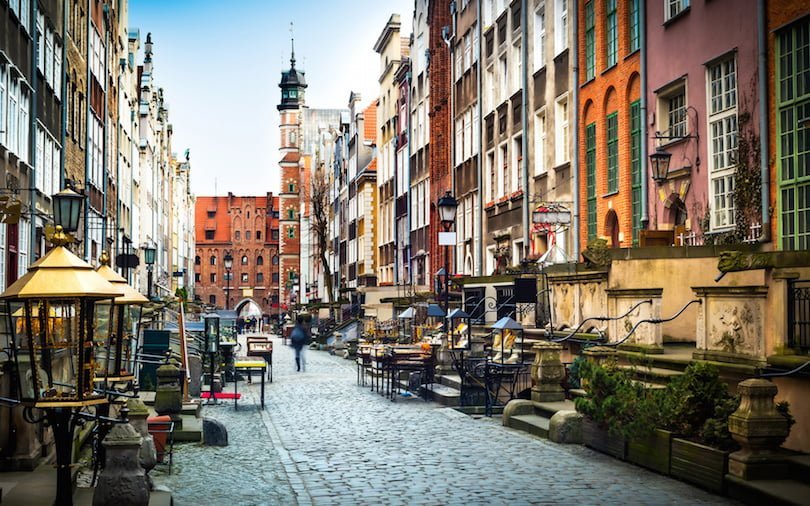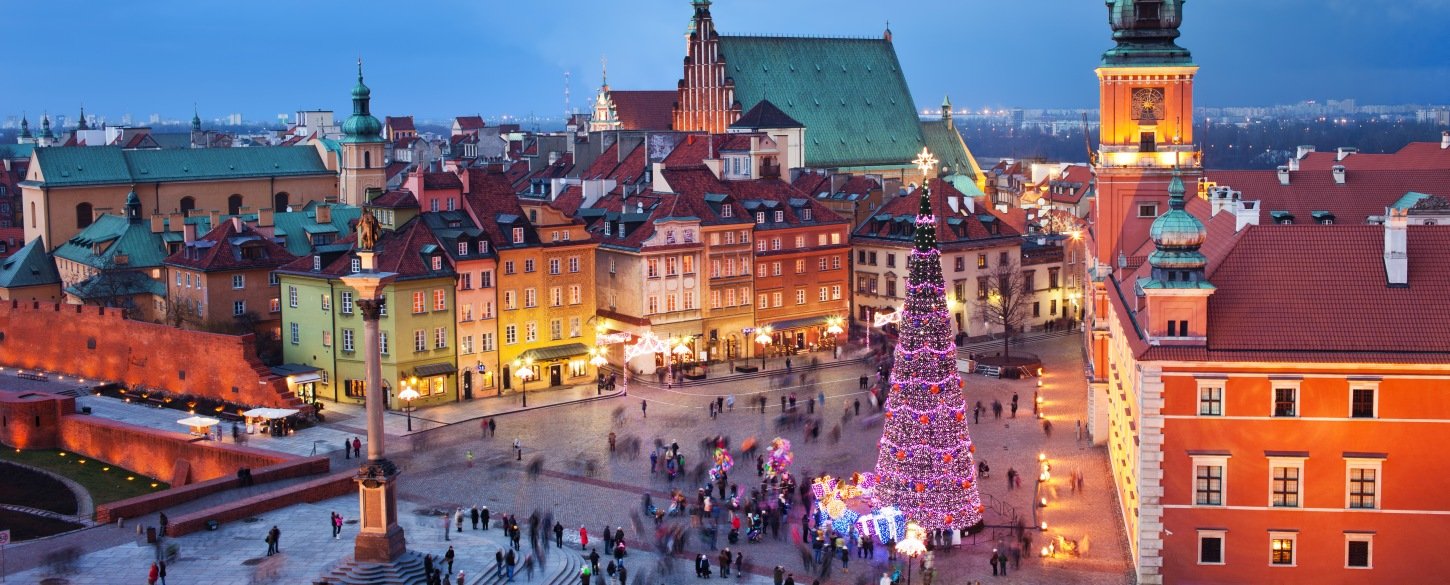17 Best Top Tourist Spot in Poland, it is a country that evokes a profound sense of wonder. It stands out among nations for its remarkable commitment to preserving its past. While embracing progress, Poland fearlessly ventures into urban development when necessary. The ancient towns proudly showcase their history through architectural wonders that seamlessly guide visitors through the medieval era, the Renaissance, and beyond. The ravages of World War II have necessitated the adoption of modern designs, but every possible effort has been made to reverse the course of time.
Best Top Tourist Spot in Poland truly distinguishes it is the opportunity to immerse oneself in its history and culture without succumbing to the typical tourist experience. Historical squares, vibrant markets, and majestic bell towers offer a glimpse into an authentic local culture, akin to peering through a looking glass. Gone are the days of falling into tourist traps, even in the most popular getaway towns, as they exude an undeniable charm. However, Poland’s allure extends far beyond its urban centers. The country boasts numerous national parks, expansive lake districts, and the largest population of wild bison in Europe, providing a diverse range of attractions for tourists to explore. This amalgamation of experiences makes Poland an unforgettable destination.
Wawel Royal Castle

Kraków’s Old Town is home to the esteemed Wawel Royal Castle, which is widely regarded as one of Poland’s most revered landmarks. This castle holds great significance as a symbol of pride, independence, and patriotism, much like Buckingham Palace in the UK. Notably, some of the ancient stone buildings in this area can be traced back to the 10th century. However, the castle itself was originally constructed in the 1300s.
As it underwent expansions in the following centuries, a captivating fusion of Gothic, Romanesque, and Renaissance architectural styles emerged. These structures serve as some of Poland’s oldest and most remarkable examples. Entry into the castle complex and grounds is free of charge. However, we highly recommend obtaining a ticket in advance to fully explore the enchanting interior, which houses Poland’s crown jewels.
Zalipie

Zalipie is a must-visit destination for those who appreciate vibrant colors and charming villages. This town, located in the southern part of Poland, is a hub of artistic expression. The houses here are adorned with colorful flower patterns, and even the trees, furniture, and kennels are painted. The overall experience is truly unique and joyful, with the House of the Woman Painters being a standout attraction. Zalipie offers a perfect escape from the city, with its serene natural surroundings and small-town atmosphere.
Masurian Lakeland

The Masurian Lakeland, located in northeast Poland, is renowned for its vast expanse of more than 2,000 lakes. These lakes are scattered across a captivating terrain that stretches from the lower Vistula to the Russian border. Undoubtedly, it stands as one of Poland’s most sought-after tourist destinations and ranks among Europe’s most picturesque lake regions. During the Pleistocene ice age, the Masurian Lakeland was shaped by colossal glaciers.
As a result, the region now showcases a harmonious blend of rugged and unspoiled landscapes, where lateral moraines gracefully descend towards magnificent lakes that once served as the foundation for these immense blocks of ice. For those seeking adventure, kayaking trails offer an immersive experience in exploring the lake district. Moreover, the region is steeped in history, with a plethora of historical landmarks to discover, ranging from ancient castles to the infamous Wolf’s Lair, which served as Hitler’s former headquarters.
Schindler’s Factory, Krakow

Exploring Schindler’s Factory in Krakow is a haunting and thought-provoking experience, much like visiting Auschwitz. During World War II, the factory served as a clandestine refuge for over 1,000 Jews, as it transformed from an enamel factory to an ammunition production site. Oskar Schindler utilized this transformation to transfer Jewish workers from the Plaszow labor camp under his protection.
Today, the factory stands as a living testament to history, housing an enlightening museum. The Historical Museum of the City of Krakow provides a glimpse into the factory’s working past, showcasing authentic products and offering insights into life in Krakow during that era.
Lake Morskie Oko

Situated within the mountainous Tatra National Park, Lake Morskie Oko showcases a remarkable spectacle of natural beauty. From the lake’s edge, one can witness the majestic mountains emerging from the valley, transitioning from lush greenery to expansive gray rock as they ascend in height. The remnants of past and current glaciers can be observed, leaving their marks on the landscape. This breathtaking panorama is mirrored on the tranquil surface of the lake, leaving an indelible impression on all who behold it.
The Tatra Mountains boast of the largest alpine lake, which is fed by glacial water and snowmelt, making it exceptionally pure. To reach this lake, you can take a winding hiking trail that extends beyond the lake to offer stunning elevated views. Alternatively, you can opt for a more adventurous, albeit bumpy, ride on a local horse-drawn cart.
Auschwitz-Birkenau

A visit to Auschwitz-Birkenau is an essential part of any trip to Poland due to its immense significance and solemnity. This concentration camp was the largest of its kind during World War II and has been preserved as a World Heritage Site, almost unchanged from its original state.
Exploring Auschwitz I and Auschwitz-Birkenau is the only way to fully comprehend the magnitude and extent of the genocidal operation. When Birkenau was liberated by Soviet Forces in 1944, the camp encompassed 300 buildings spread over 420 acres.
The combination of ruins and intact structures in both places provides a somber atmosphere for visitors, as they can witness the remnants of a tragic past. The museum on site offers a comprehensive account of the events, leaving nothing hidden from the public eye.
Gdansk Old Town

Gdansk, also referred to as the Pearl of the North, is a city that truly lives up to its name. With its charming streets located in the famous Old Town, it is a popular weekend destination for locals and visitors alike. Founded in the 10th century, the city has a rich history of being ruled by Teutonic Knights, Prussia, Germany, and finally Poland, resulting in a unique blend of architecture and culture. Despite the destruction caused by WWII, the city has been meticulously reconstructed, restoring its medieval allure and making it a joy to explore.
Slowinski Sand Dunes

The Slowinski Sand Dunes in Slowinski National Park are a breathtaking sight to behold in Poland. These sand dunes run along the coast of the Baltic Sea and are a must-see attraction. You can choose to explore them on foot or by bicycle, but the most enjoyable way is to hop on one of the park’s golf carts.
One of the main attractions of the national park is the moving sand dunes, which include the Lacka and Czolpinska dunes. These dunes continue to shift due to the strong winds that come from the Baltic Sea. The size of the dunes is so immense that they seem to stretch into the distance, and you may even forget that you are near the water. As the dunes rise and fall, you may feel as though you are in a vast desert.
Bialowieza Forest

Located on the eastern coast of Poland, the Bialowieza Forest is a rare gem, representing one of the few remaining untouched forests in Europe. Designated as a UNESCO-protected site, this forest showcases some of the most breathtaking natural landscapes in the entire country. What sets it apart is its remote location, which allows visitors to escape the hustle and bustle of nearby towns and immerse themselves in the tranquility of nature.
While a significant portion of the forest extends into neighboring Belarus, the Polish section offers the most accessible opportunities for exploration. It is here that you will encounter the largest herd of wild bison in Europe, taking full advantage of the forest’s abundant biodiversity. As you embark on one of the numerous hiking trails, you too can uncover the wonders of this unique ecosystem.
These well-marked paths will lead you through ancient forests, picturesque open meadows (favored by the roaming bison), and lush wetlands. Each step will reveal a diverse range of habitats, providing a safe haven for wolves, deer, boar, foxes, and lynx. Whether you are a nature enthusiast or simply seeking a peaceful retreat, the Bialowieza Forest promises an unforgettable experience amidst its pristine beauty.
Wroclaw’s Dwarfs

In the southwestern region of Poland lies the captivating city of Wroclaw, which boasts a captivating phenomenon. This phenomenon revolves around the presence of dwarfs, although they are not of the real kind. Instead, the city is adorned with a multitude of dwarf statues, which have transcended their initial political significance (a story for another time) and evolved into a captivating tradition.
These enchanting dwarfs can be discovered in Wroclaw’s Old Town and Market Square. However, these are not your ordinary dwarfs. Each one possesses its own distinct personality and individuality, ensuring that no two are alike. You may stumble upon a dwarf riding a motorcycle, while another may be seen holding flowers with a cheerful grin on its face.
Remarkably, there are more than 600 of these delightful statues scattered throughout this particular area of the city, and there are no indications of this trend slowing down anytime soon.
Malbork Castle

The city of Malbork will leave an indelible mark on your memory from the very first time you lay eyes on it. The sheer magnitude of the Malbork Castle’s red roofs is enough to captivate anyone. These roofs adorn the largest brick castle in the world, making it an awe-inspiring sight.
Back in the 15th century, the Teutonic Knights, also known as the Crusaders, established their presence in this very place. Originally built as a fortress, the castle served as a stronghold for the prominent military and religious center of Poland.
As time passed, the castle endured significant damage during the Second World War. However, thanks to dedicated efforts spanning three decades, it was successfully revitalized. Today, visitors have the opportunity to explore the Gothic castle, immersing themselves in its vast array of rooms, ancient chambers, kitchens, and the expansive courtyard.
Warsaw Old Market Place

The Old Market Place in Warsaw exudes a quiet charm that is hard to forget. Unlike other attractions that merely tell the story of a city’s history and culture, this place shows it to you. The square is surrounded by ornately painted townhouses that date back several centuries, giving visitors a glimpse of the city’s rich Renaissance architecture and local culture. Despite being located in a bustling city, life here seems to slow down to a halt, allowing you to fully immerse yourself in the surroundings.
There are plenty of charming cafes and restaurants that offer the best seats in the house to take it all in. At night, the sound of glasses clinking fills the air as locals toast to the end of the day, and live music replaces the tunes of horse-drawn carriages.
For those who are interested in exploring, the History Museum is spread throughout 11 of the square’s townhouses, while the Museum of Literature can be found on the eastern side.
Wieliczka Salt Mine[SEE MAP]

The Wieliczka Salt Mine is an absolute must-see during your time in Poland. With a history dating back to the 1200s, it’s incredible that it remained operational until 2007. Known as the Underground Salt Cathedral of Poland, this name perfectly captures the awe-inspiring beauty of the mine.
Located just outside of Krakow, a visit to the salt mine is a unique opportunity to explore the underground passageways and learn about the fascinating history of salt mining. While there are over 300 kilometers of paths to explore, be sure to stop and admire the four chapels within the mine. The Chapel of St. Kinga is the most impressive, with murals, chandeliers, and towering ceilings all crafted from salt.
Krakow Main Market Square

Krakow, often overlooked in favor of Warsaw, boasts some of the most impressive medieval architecture in Europe. The Main Market Square, the largest medieval square on the continent, is a prime example of this. Remarkably, it managed to escape any damage during the Second World War. While enjoying a cup of coffee in one of the elegant cafes, you can take in the stunning 13th-century architecture that surrounds you.
The bustling crowds of locals only add to the vibrant atmosphere. The Halls and townhouses in the area transport you back in time, but the true gem is the Cloth Hall. This historic building is home to a market that has been operating for almost 700 years, selling authentic handicrafts rather than the typical tourist souvenirs. Additionally, the Cloth Hall houses a museum that showcases remarkable 19th-century art.
Zakopane

Zakopane, situated just a two-hour drive away from Krakow, is a picturesque town nestled in the mountains. It is a beloved destination for locals throughout the year, offering a plethora of activities. During the summer, visitors can indulge in the joy of hiking to Morskie Oko, while in the winter, the glistening snow provides excellent skiing opportunities.
Zakopane exudes a captivating alpine charm, with its slanted roofs and intricately carved timber houses, evoking the ambiance of an adventurous frontier town. The town boasts a lively summer market and a convenient funicular station, ready to transport you to the majestic mountains. The influence of the Highlander culture can be felt throughout the town, particularly in its delectable local cuisine. A must-try delicacy is their tangy smoked sheep’s cheese.
Gingerbread Museum, Torun

Torun’s Gingerbread Museum, which was once a gingerbread factory, showcases the fascinating history of the beloved Kopernik. The Weese family, based in Torun’s Old Town, played a significant role in popularizing this traditional gingerbread.
However, it is not solely about acquiring knowledge regarding this delectable delicacy. Instead, you will embark on an expedition through the historical background of the factory, delving into different time periods. The journey commences at a medieval market stall, followed by an exploration of diverse gingerbread molds ranging from the 1600s to the 20th century.
Upon catching a glimpse of one of the oldest bakery ovens, you can engage in workshops and create your own gingerbread. The experience culminates with a visit to the cafe on the first floor, where you can sample gingerbread made in various styles and flavors from the past to the present.
Wolf’s Lair is one of the 17 Best Top Tourist Spot in Poland

The history of Poland during the Second World War is deeply intertwined with the Wolf’s Lair. Situated in the heart of the Masurian Lakeland, this secluded complex served as Hitler’s original military headquarters for the Eastern Front. Standing within its premises, one cannot help but feel a peculiar sense of awe, knowing that it was from here that Hitler initiated Operation Barbarossa and ordered the invasion of the Soviet Union.
As you navigate through the labyrinthine system of bunkers, tunnels, and staterooms, the atmosphere becomes increasingly eerie. Remarkably, there is even a hotel within a restored section of the compound, once occupied by Hitler’s personal security team.





